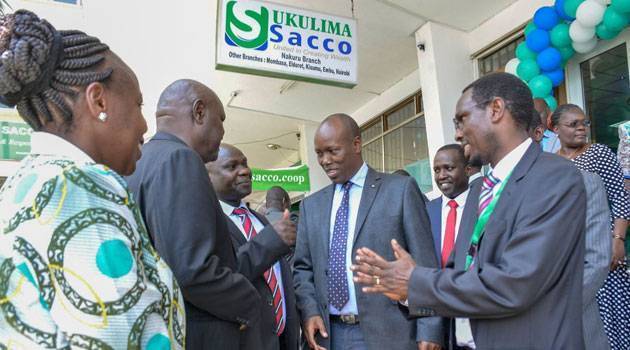The growth of Savings and Credit Cooperatives (SACCOs) in Kenya has been significant in recent years, with both individuals and corporations investing in these financial institutions. SACCOs provide a convenient way to save money and access affordable loans, offering members numerous benefits such as higher interest on savings and lower loan rates. Whether you’re interested in forming a SACCO for your community, workplace, or other common interest group, the process can be straightforward if you follow the correct steps.
Here’s a detailed guide on how to register a SACCO in Kenya, focusing on both non-deposit-taking and deposit-taking SACCOs.
Types of SACCOs in Kenya
- Non-deposit-taking SACCOs: These are SACCOs that do not accept savings from their members. Their main focus is providing credit to members from pooled resources.
- Deposit-taking SACCOs (DTS): These SACCOs accept deposits from members and operate almost like banks. They are regulated by the SACCO Societies Regulatory Authority (SASRA) and must adhere to stringent requirements.
Registration Process for a Non-Deposit-Taking SACCO
The process of registering a non-deposit-taking SACCO involves the following steps:
1. Submit a Formal Request
Write a formal letter expressing your intent to form a SACCO and submit it to the relevant authorities, typically the County Cooperative Officer.
2. Proposed SACCO Names
Provide a list of proposed names for the SACCO. These names will be subject to approval after a search to ensure they are not already in use.
3. State the SACCO’s Objectives
Clearly outline the objectives of the SACCO, which should align with providing financial services to members based on shared goals.
4. Have at Least 10 Members
A minimum of 10 founding members is required to register a SACCO. You must provide details such as the members’ names, occupations, and postal addresses.
5. List SACCO Officials
Nominate key officials including a Chairman, Treasurer, and Secretary, providing their names, occupations, and addresses.
6. Provide the SACCO’s Physical Address
The physical address of the SACCO, including road, plot number, town, and county, must be documented.
7. Draft a Constitution
Develop a constitution that will govern the SACCO’s operations. This document outlines the SACCO’s rules, regulations, and member rights.
8. Submit Required Forms and Documents
- Form A: Application for registration.
- Form B: Notification of registered office and address.
- By-laws: Submit the proposed by-laws, application forms, and an economic appraisal in four copies.
- Employer’s Letter (if applicable): If the members are salaried, provide a letter from their employer agreeing to deduct contributions from salaries.
9. Pre-Cooperative Meeting
The Cooperative Officer will hold a pre-cooperative meeting with at least 10 members. The purpose is to educate the members about their roles and responsibilities. Interim officials will be appointed to oversee the registration process.
10. SACCO Name Approval and Registration
Once the SACCO name is approved, fill out the registration form with details of all board members. Include proof of identification for each member, as well as their physical addresses.
11. Wait for Approval
The registration process takes approximately two months, after which the Registrar issues a Certificate of Registration.
Registration Process for a Deposit-Taking SACCO
If you plan to start a deposit-taking SACCO, the requirements are more stringent. Here’s what you need to know:
1. Apply for SASRA Licensing
Deposit-taking SACCOs must be licensed by the SACCO Societies Regulatory Authority (SASRA) as mandated by the SACCO Societies Act, 2008.
2. Submit a Formal Request
A formal application must be made to SASRA, including details about the SACCO’s business model, operations, and membership.
3. Additional Documentation
Depending on the type of SACCO (e.g., workplace SACCO, matatu SACCO, welfare group SACCO), the following documents may be required:
- Employer’s Confirmation Letter: For workplace-based SACCOs.
- Vehicle Logbooks: If the SACCO is transport-based.
- Business Licenses or Incorporation Certificates: For business-based SACCOs.
- Religious SACCOs: Provide a certificate of incorporation and approval letter from the presiding clergy.
4. Obtain Approval
Once SASRA reviews and approves your application, you will be issued a Deposit-Taking License. This license is mandatory for SACCOs that accept deposits from members.
Compliance with SACCO Rules and Regulations
Both non-deposit-taking and deposit-taking SACCOs must comply with the SACCO Societies Act and the SACCO Societies Regulations of 2010. Some of the key compliance measures include:
- Regular submission of financial reports.
- Conducting annual audits.
- Convening annual general meetings (AGMs).
Newly registered SACCOs must hold their first general meeting within one month after receiving the Certificate of Registration. Failure to do so may result in the cancellation of the SACCO’s registration.
Benefits of Registering a SACCO in Kenya
- Access to affordable loans: Members can access loans at competitive interest rates.
- Pooling of resources: SACCOs offer a structured way for members to save and borrow.
- Tax Benefits: SACCOs enjoy various tax exemptions that help in their operational efficiency.
Registering a SACCO in Kenya can be a rewarding endeavor, both for individuals and organizations. Whether you’re starting a community-based or workplace SACCO, following the outlined steps will ensure a smooth registration process. Once registered, SACCOs provide members with affordable financial services, boosting both personal and collective growth.
SACCOs are instrumental in promoting financial inclusion in Kenya, and with the right guidance, you can start a successful one.





